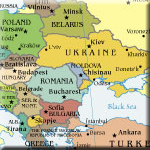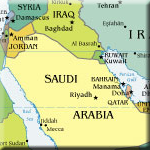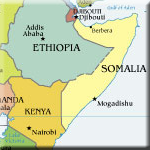




All efforts at stabilising a war-torn country will be in vain if the economy does not come back to life. Providing security, fixing infrastructure, building democracy have no lasting effect if the engines of economic growth don’t run. In the poorer countries, those engines are foremost agriculture and small enterprises and, with increasing income levels, larger enterprises and banks.
War-related damage is not the principle obstacle to getting the engines of growth running; it can be overcome with the help of moderate amounts of money and some technical assistance. A much more fundamental problem, as mentioned in chapter 8, is the protective wall that the rich countries –the U.S., E.U., and Japan- have erected around those parts of their economies where poor, low-wage countries could effectively compete, mainly agriculture and labour-intensive manufacturing such as the textile and apparel industries.
The rich countries protect their labour-intensive manufacturers through the traditional means of import duties and import quotas, leaving the poor countries little scope for growth in these areas. Not a single case comes to mind where an exception to these protectionist rules has been made in favour of a post-conflict country.
Protection of agriculture in the U.S., E.U., and Japan is a widely discussed subject. It is mainly done through very large subsidies to domestic farmers amounting to about 300 billion US dollars every single year. Most people in the rich countries don’t seem to be aware that they are financing this Himalaya of subsidies through vastly increased food prices and through taxes(8). The effect of the subsidies, as should be expected, is a considerable increase of production, leading both to the exclusion of lower-cost imports of, say, cotton, sugar and rice from developing to developed countries, and to the dumping of the developed countries’ surpluses of, say, food grains and cotton on the world market, thus severely depressing prices. The net result of this protectionist system erected by the world’s richest countries is an enormous impoverishment of the rural economy in most developing countries, leading to widespread malnutrition, poor health, illiteracy, rural exodus and urban poverty in many parts of the world.
All informed observers, except the spokesmen of the farmers who benefit from the current system, agree with this analysis. There is also widespread agreement that the current system destabilises many governments and, in extreme cases, contributes in a major way to the failing of states. However, there seems at present to be little prospect for significant improvement of the system in the current round of discussions on world trade, the so-called “development round”.
The main reason for the resistance to change in the U.S., Japan and some European countries, mainly France, seems to be the reliance of the governing parties on rural voters to stay in power. Post-conflict countries, which are mostly dependant on agriculture for half of more of total employment, are not treated any different from other countries with regard to trade in agricultural products.
On the contrary, they are preferred dumping grounds for the surplus food production of the U.S. and the E.U. This “food aid”, necessary in the immediate aftermath of war, frequently goes on for several years, depressing prices of local produce and driving farmers away from their land into urban slums.
What should be done is of course a rapid phasing-out of the current system of agricultural subsidies, to the great benefit of most people in both rich and poor countries. This, however, may not happen for some time.
A second-best would be preferential treatment for those countries that suffer most from the current system and where political stability and sustainable development are at stake. That would include most post-conflict countries. Such a preferential system for a number of agricultural and industrial products in a significant number of countries would be fairly complex in design and cumbersome to administer, but would be on both accounts far simpler than, say, the European Union’s Common Agricultural Policy.
Short of such a preferential system post-conflict countries can do only one thing: protect their farmers with quotas and import duties on products where world market prices are artificially depressed. However, this would mainly apply to food products, and there would be a colossal amount of screaming and protesting from both, donor-country governments and the local urban population who would have to pay more for their food. Nevertheless, if a post-conflict government feels strong enough to do this on a selective basis, it is certainly worth a try.
Turning to the physical aspects of post-conflict recovery, the farmer’s needs are not different form those of any small enterprise: he needs inputs, equipment and a building. The war may have robbed him of all inputs such as seeds, fertiliser and pesticides; all or part of his livestock and farming equipment is probably gone or heavily damaged, and his house and other buildings may be damaged to a considerable degree. It is now the donors’ responsibility to provide him with all necessities and to ensure, very importantly, that he does not miss the next sowing season.
Donors should pool their resources to provide comprehensive packages tailor-made to individual farmers’ needs and sufficient in each case to re-create fully productive farms in the shortest possible period not exceeding one year. Time is of the essence in the rural economy: if there is no prospect of help in the near future, destitute farmers and their families will leave the land and emigrate to the next city to become slum dwellers who will never return to their origins.
The size of the packages for individual farms can range from a few thousand dollars where damage is limited up to maybe 50 000 dollars where expensive equipment such as a tractor must be replaced and where buildings and houses are largely destroyed. Distribution of the most urgent items such as seeds should be done on the basis of a rapid overview of needs, while the allocation of full packages must be preceded by a fairly detailed inventory of damages. That inventory should be prepared by a suitable NGO or other competent organisation, which is capable to field a large team on short notice.
On what terms should the help to farmers be provided? Some people argue that much of it should be provided on loan terms, but that is both inefficient and inequitable. It is inefficient because there is probably no financial intermediary to administer these loans, and creating one is both time-consuming and costly; in any event, most farmers who have lost part or most of their assets during a conflict are probably unable to service a loan, even on easy terms. It is inequitable because the rational for loan-financing of assistance packages is the intent to treat everybody in the same way, independent of the amount of damage they have suffered, while equity calls for giving help in proportion to the amount of damage suffered.
Thus it is both efficient and equitable to provide the farm packages as grants free of all charges, except for an obligation not to re-sell what has been received. Some re-selling will nevertheless occur, but it will be quite limited if the assistance packages have been well designed.Turning to the other important part of a post-conflict country’s productive base, namely non-farm small and medium enterprises, an approach similar to that for the farming sector is proposed. The main difference is that it is more difficult to select beneficiaries. While in agriculture most potential beneficiaries can be easily identified by just looking around, that is not the case for non-farm small enterprises. Additionally, the purpose of the assistance program is to maximise employment and production rather than to just compensate war-related damage. Probably the best way to identify beneficiaries is to approach the problem from the demand side: a war-damaged economy needs masons, carpenters, plumbers, blacksmiths, electricians, equipment repair shops, etc.
Restaurants and shops in towns and cities are nice to have but less essential, except for the occasional hardware and dry goods store. More important are agro-processing and labour-intensive manufacturing, where the recovery program should build on the country’s strength, be it in textiles, garments, shoes, furniture or whatever else.
A call for candidates for assistance, to be given partly as grant, will probably have a very strong response. Selecting the most promising candidates is the most delicate part of the exercise. Using past experience in the candidate’s chosen field as dominant criterion has the double advantage of reducing risk of failure and introducing an element of equity. In addition, the honesty and strength of the candidates’ intention to exercise the proposed activity must be tested. A financial test seems most suitable. For example, candidates pre-selected on the basis of past experience could be given vouchers that are redeemable against the purchase of materials and equipment needed for the chosen activity. Half of the nominal value of each voucher would be given as a grant, while the other half would be payable in cash either immediately or at a predetermined later date. Immediate payment would entitle to a significant discount, resulting in effect in something like two thirds of the voucher’s nominal value being given as grant.
The upper ceiling of the value of vouchers for each recipient would depend on the circumstances: it costs obviously less to establish oneself as a plumber or electrician than it costs to set up a shop for equipment repair or the manufacturing of furniture or shoes.
A voucher program as described is only one option to support the emergence of small and medium enterprises. Other, more traditional approaches rely mainly on the banking system, which may or may not exist and if it exists, may find it too risky and cumbersome to lend to people who are not bankable by traditional criteria. Banks are more suitable to help revive existing enterprises with at least some ongoing operations. Non-traditional banking, generally known as micro-credit lending has a much better track-record in this regard and should be used where appropriate, that is where very small loan amounts are sufficient for individuals to establish themselves in a trade or service.
The size of the non-farm small enterprise support program cannot be determined in advance. All legitimate demand should be satisfied and, obviously, the more demand there is, the better it is for the country.
Like the rest of the economy, banks and the larger enterprises rarely survive a conflict without serious damage.
Even in cases where physical damage is limited, enterprises normally suffer greatly due to lack of inputs or lack of demand, or both. Their cash flow may have dropped to zero or may have become negative, even if they are able to maintain a limited amount of production. Most enterprises will probably be unable to service their loans, with the result that commercial banks by the time the conflict ends have a portfolio of mostly non-performing loans. At least technically, they are bankrupt.
Even in poor countries, banks and enterprises are a critically important part of the economy. How can they be revived?
The easiest would seem to be to write off all non-performing loans and to re-capitalise both, banks and enterprises. However, this has two drawbacks. First, it is very costly and funds to do that are not normally available, neither nationally, nor from donors. Second, it would recreate a carbon copy of the pre-conflict structure which very often has been ill adapted to the country’s development needs and may be even more ill adapted after a conflict. In many countries, and even in relatively advanced ones, the banking system, consisting of the central bank and commercial banks, is being used by the most powerful group of people in the country to maintain their elevated status in terms of power and wealth. That leads frequently to continuing financial support through the banking system of numerous enterprises which could not survive if they were exposed to the rigours of the market: As a result, many post-conflict countries had already at the time of the beginning of the armed conflict an obsolete industrial and enterprise structure which should not be re-created after the conflict. Somebody, such as a committee of experienced and independent individuals, will have to decide which enterprises and banks should be revived with little change, which ones should be substantially restructured and which ones should be closed down. That seems to be a Herculean task demanding great force and virtue, and it probably is, but similar programs have been implemented quite successfully in some of the reforming socialist economies of Central Europe and, more recently, in Turkey. It can be done successfully only in times of great crisis, such as at the end of a war, because at all other times the resistance of those who were and maybe still are in power cannot be overcome. In practical terms, it implies a nationalisation of a significant part of non-performing loans and a re-capitalisation of selected banks, combined with a rigorous oversight over the future operations of the re-capitalized banks.
The cost of this approach to bank and enterprise restructuring is quite high and can at best to a small part be financed from the country’s budget. Major donor support is necessary, but it is also worthwhile: a restructuring of this kind, where it is needed, will contribute more to a post-conflict country’s economic future than, say, rebuilding a country’s infrastructure to standards which are not really needed for the next few years.
(8) Nobody seems to have yet pointed out that the increase in food prices caused by the subsidy systems represents a strongly regressive form of taxation since low-income households spend an above average share of their income on food.